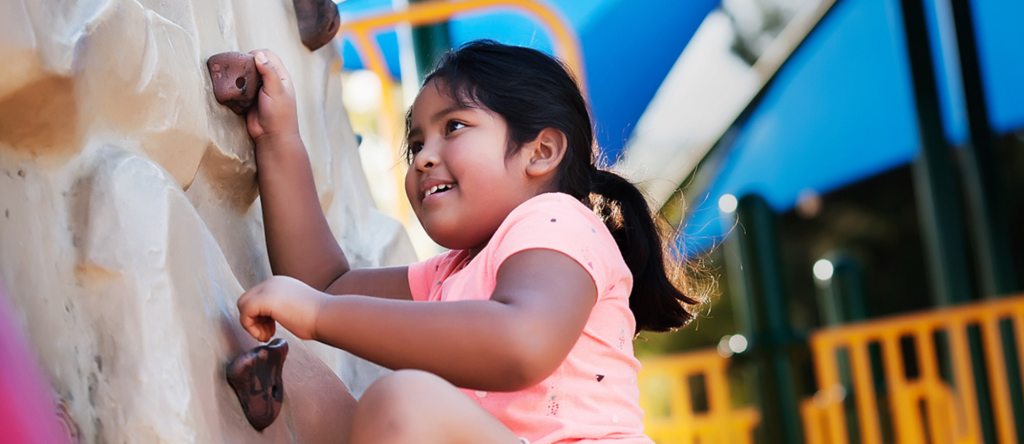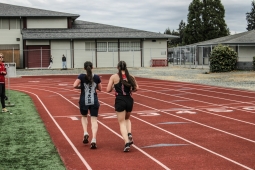Physical Literacy Before the Bell Rings: A Before-School Physical Activity Program

Previously published in Volume 84, Issue 1
Participating in regular physical activity, including physical education and school-based programs has physical, social, intellectual and psychological benefits (NRCIM, 2002). Specifically, children and youth may have better weight control and cardiovascular fitness (Poitras, et al., 2016), improve their subjective well-being and happiness (Fraser-Thomas & Côté, 2004), develop skills such as cooperation, responsibility, and self-control (Côté, 2002), and notice a positive association with academic performance (Dwyer et al., 2001). Yet most Canadian children and youth are not physically active often enough (ParticipACTION, 2016).
TELUS Active in the AM
To address the lack of physical activity participation and increase access to healthy food choices, Abilities Centre in Whitby, Ont. partnered with two local schools to offer TELUS Active in the AM. This before-school healthy living program encouraged students in grades 7 and 8 to be more active by participating in physical literacy activities, and to start their day with a nutritious breakfast, which was provided on site at school. Active in the AM was designed to support child and youth development in physical literacy, physical activity participation, healthy food choices, academic performance, positive psycho-social well-being, and inclusivity and accessibility.
Across two schools located in priority neighborhoods in the Durham region, 25 students attended this twice-weekly program over 12 weeks. Each 1.5-hour session began with a discussion of nutrition and healthy eating concepts such as reading labels and using the Canada Food Guide to make healthy food choices in the morning. The students were then led through a warm up that introduced the physical literacy concepts and movement skills for the day. For example, students played capture the flag to practice dodging and running between moving obstacles. Time was also spent building a specific movement skill such as shooting a basketball. These physical literacy concepts and movement skills were then combined and applied in a culminating activity such as a small-sided game of basketball. Finally, students were also provided with nutritious breakfast food items such as oatmeal and fruit before heading off to start their school day.
To help us learn about the students’ experience, a pre- and post-program evaluation was completed to examine physical activity behaviour and knowledge related to physical activity and nutrition.
Physical activity behaviour
We used the Physical Activity Questionnaire (PAQ), a self-report survey (Kowalski, Crocker, & Faulkner, 1997) to learn about the types and frequency of physical activity that students completed during a typical school week, including the weekend. By the end of Active in the AM, students were more active in a wider variety of physical activities. For example, they reported to engage in some physical activities, such as skipping, jogging, and dance more frequently. The students also reported more ‘other’ activities, which suggests they could not find their chosen activities on the list. This aligns well with the program curriculum as students were encouraged to play games and non-sport activities in their spare time.
There was also a reported increase in physical activity during recess, lunch and school night evenings, however, physical activity behaviour did not change over the weekends. Future interventions could focus on family physical activity to encourage students to participate with their family members on the weekends. This could include take away activities for the students with specific activity suggestions or a family-friendly wrap up activity that involves the whole family. Future research could then explore the impact on overall family physical activity levels.
In addition to reporting more physical activity, students significantly improved their fitness, which was evident by the average increased distance of 91.5m in their 6-Minute Walk Test (a performance-based measure of fitness capacity in which students walked around a track for six minutes; Ulrich et al., 2013).

Physical activity and nutrition knowledge
With a focus on improving physical activity and nutrition knowledge and understanding, students completed a survey that included questions closely aligned with Canadian Physical Activity and Sedentary Behaviour Guidelines (CSEP, 2012). Students showed increased knowledge and understanding in most areas. Following Active in the AM, students shared physical activity definitions that aligned more closely with the Canadian Physical Activity Guidelines. They referenced the use of energy, sweat, and being out of breath as key indicators of activity. This differed from their pre-program definitions which focused around exercise and sport examples. Students also included ‘fun’ and ‘enjoyable’ as key defining terms. Although this is not included in an official definition of physical activity, it indicates a more positive association. When asked about physical activity benefits, students shifted from commenting on general health and fitness pre-program to responses that focused on brain health, increased energy, mood, happiness, and strength. This indicates a more holistic understanding of the benefits of physical activity. Before Active in the AM, students were very unfamiliar with the term ‘sedentary’, however, by the end, they could provide a clear definition with a variety of activity examples that would increase physical activity and decrease sedentary behaviour.
Overall, TELUS Active in the AM was effective in increasing physical activity behaviour and knowledge in grade 7 and 8 students. Partnering with local schools to deliver a before school program that emphasises, physical literacy participation and learning may provide a useful strategy to address the prevalence of inactivity among children and youth.
For more information about TELUS Active in the AM, please contact Dr. Jennifer Leo, Director, Research at Abilities Centre at [email protected].
References
Canadian Society for Exercise Physiology (CSEP). (2012). Canadian physical activity guidelines, Canadian sedentary behaviour guidelines: Your plan to get active everyday. Retrieved from Canadian Academy of Sport and Exercise Medicine website: https://casemacmse.org/wpcontent/uploads/2014/03/CSEP_Guidelines_Handbook.pdf
Côté, J. (2002). Coach and peer influence on children’s development through sport. In J.M. Silva & D. E. Stevens (Eds). Psychological foundations of sport. (pp.520-540). Boston, MA: Allyn & Bacon.
Dwyer, T., Sallis, J. F.., Blizzard, L., Lazarus, R., & Dean, K. (2001). Relation of academic performance to physical activity and fitness in children. Pediatric Exercise Science, 13, 225-238.
Fraser-Thomas, J. L., & Côté, J. (2004). The role of structured sports in children’s daily happiness. Manuscript in preparation
Kowalski, K. C., Crocker, P. R. E., & Faulkner, R. A. (1997). Validation of the physical activity questionnaire for older children. Pediatric Exercise Science, 9, 174-186.
National Research Council and Institute of Medicine. (2002). Community programs to promote youth development. Washington: National Academy Press.
ParticipACTION. (2016). Are Canadian Kids Too Tired to Move? The ParticipACTION Report Card on Physical Activity for Children and Youth. Toronto. Retrieved from https://www.participaction.com/sites/default/files/downloads/2016 ParticipACTION Report Card - Highlight Report.pdf
Poitras, V. J., Gray, C. E., Borghese, M. M., Carson, V., Chaput, J.P., Janssen, I.,… & Tremblay, M. S. (2016). Systematic review of the relationships between objectively measured physical activity and health indicators in school-aged children and youth. Applied Physiology, Nutrition, and Metabolism, 41, S197-S239. https://doi.org/10.1139/apnm-2015-0663
Ulrich, S, Hildenbrand, F. F, Treder, U., Fischler, M., Keusch, S., Speich, R., & Fasnacht, M. (2013). Reference values for the 6-minute walk test in healthy children and adolescents in Switzerland. BMC Pulmonary Medicine, 13, 49. doi: 10.1186/1471-2466-13-49.










